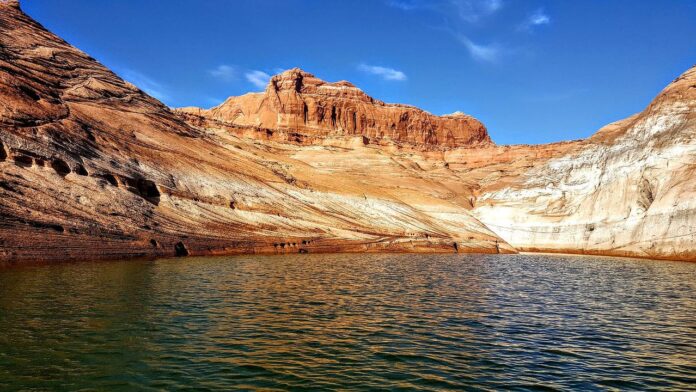The first time I saw the Grand Canyon, I understood the expression, “rendered speechless.” My husband and I were traveling with another couple, without our collective seven children for the first time.
Unable to see the canyon, we parked the car and started walking closer. Mid-conversation we suddenly stopped talking. All communication ceased as the vastness of the Grand Canyon opened up before us. The sweeping views of red rock and sparse green vegetation were more elaborate than I had imagined. Far down below, the Colorado River was an artery, supplying sustenance to a variety of living creatures.
I realized that nothing else on the trip could compete with that moment. Surprisingly, a few days later, I was again mesmerized. This time I was spellbound by a man-made creation.
Hidden gem
We had traveled to Page, Arizona, for dinner and music. The city of Page is next to the Navajo Nation, the largest Native American tribe in the United States. Additionally, the Navajo people compose the largest group of the population in the Glen Canyon area.
My husband has a quirky habit of asking about local hangouts while traveling. He loves to talk to locals at restaurants and gas stations in an attempt to find a local gem. I keep waiting for the day one of the locals plays a trick on him and leads him to a garbage dump.
In town, several locals he met told him about a secluded swimming area along the shores of Lake Powell. They described a side road and a small parking lot. Several times I thought we were being led to our demise. Instead, we followed their directions to a trail that hiked through what looked like the famous Antelope Canyon, but not on the reservation.
It was more beautiful than a screensaver frozen on a computer screen. The rock resembled rolling waves of amber, deep grooves etched in over time. Weaving downward, the trail led to the serene blue waters of Lake Powell.
Lake Powell
Lake Powell was created by the flooding of Glen Canyon after the construction of the Glen Canyon Dam. The 710-foot dam was completed in 1963 but it took over sixteen years before the full capacity of the lake was reached. Water levels rose to 558 feet deep at the dam and 3,700 feet above sea level in June of 1980. The reservoir is the second largest in the United States by volume; it can hold 27 million acre-feet of water.
With 1,960 miles of shoreline, it is more than twice the length of the California coastline. Many people like us visit Lake Powell for recreational purposes. Approximately two million visitors flock to the shores of Lake Powell each year for boating, fishing, kayaking, and stand-up paddle boarding.
When the dam was built, the flowing waters of the Colorado River filled in small crevices and large canyons that were created by erosion over time. Once we reached our swimming hole only known to locals, we had the surreal experience of swimming in a canyon. Like at the beach, we could wade into the water, but the wading stopped abruptly. After a few steps, we were staring into an abyss of deep water.
Lake Powell has a maximum depth of 558 feet, but the average depth is about 132 feet deep. It’s one thing to jump into the deep end at our local YMCA, it was a whole different feeling to float on top of more than a hundred feet of water. It was simultaneously alarming and exhilarating. Glancing around at the dark orange Navajo sandstone and up at the bright blue sky streaked with clouds, I had a deep sense of being in a sacred place.
Drought conditions
The water depth that intimidated me on that day many years ago is dropping at an alarming rate. Poor water management and current drought conditions are drastically affecting the Colorado River. Currently, Lake Powell is 172.56 feet below full capacity; it is over 13 feet lower than this time last year. The once massive reservoir is now less than a quarter full.
One of the fears associated with low water levels is that they could potentially fall below openings that supply water to the hydroelectric power plant. The plant supplies energy to millions of people. Lake Powell also supplies water to the Lower Basin states of California, Arizona and Nevada.
What I enjoyed recreationally is a necessity for millions of people. The storyline is not unique. Nearby Lake Mead at the Hoover Dam is 185.71 feet below full capacity. In the east, the exportation of goods out of the Gulf of Mexico has slowed down due to low water levels along the Mississippi River.
I am reminded that fresh water is one of the many things I take for granted. Even the mighty Colorado River that carved out the Grand Canyon is fragile, needing rest and replenishment.













